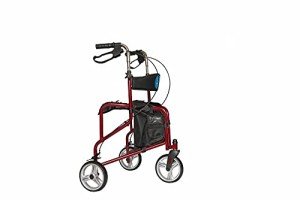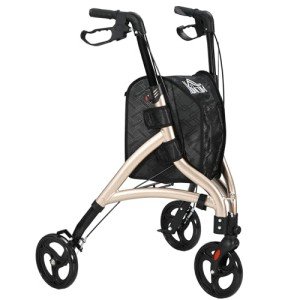
16
May10 Things You Learned In Kindergarden That Will Help You With Handicap Walker
Understanding Handicap Walkers: Types, Benefits, and Usage
Handicap walkers, likewise typically called mobility walkers or simply walkers, work as essential aids for individuals with mobility challenges. These gadgets offer physical support and stability, allowing users to walk more confidently and individually. This post delves into the different types of handicap walkers, their benefits, and crucial considerations when selecting one.
What is a Handicap Walker?
A handicap walker is a gadget created to assist individuals who have trouble walking due to age, health problem, or disability. Walkers help users keep their balance, prevent falls, and recuperate mobility. Unlike walking sticks, which supply very little support, handicap walkers usually use a broader base of stability, making them ideal for more substantial mobility challenges.

Kinds Of Handicap Walkers
Handicap walkers can be found in numerous styles, developed to fulfill the distinct requirements of users. Below is a breakdown of the most common types:
| Type of Walker | Description | Perfect User |
|---|---|---|
| Requirement Walker | A Uplivin Trive Lightweight 4-Wheel Rollator - Red frame that needs raising to move. Generally has rubber tips for traction. | Those who can lift the walker and have moderate balance concerns. |
| Wheeled Walker | Functions 2 wheels at the front, permitting for simpler mobility without lifting. | Users who can preserve stability and need more support while walking. |
| Rollator Walker | Similar to wheeled walkers however consists of hand brakes and a seat for resting. | People requiring a portable resting choice with boosted mobility. |
| Bariatric Walker | Specifically created for much heavier people, offering reinforced frames and larger hand grips. | Heavier users needing extra support and stability. |
| Kid Walker | Customized designs for children to aid in their development and mobility. | Children with developmental hold-ups or mobility challenges. |
Benefits of Using a Handicap Walker
Lots of users find that handicap walkers substantially improve their lifestyle. Here are some benefits:
1. Increased Stability
Handicap walkers offer a sturdy support structure, which helps prevent falls and enhances users' self-confidence when walking around.
2. Enhanced Mobility
Walkers make it easier for individuals with mobility restrictions to browse stairs, irregular surface areas, mymobilityscooters.Uk and other challenging environments.
3. Self-reliance
Using a walker enables individuals to carry out daily activities separately, whether it's walking your house or shopping.
4. Discomfort Relief
Walkers enhance posture and distribute weight more evenly, possibly relieving pain in joints and muscles throughout movement.
5. Social Engagement
By facilitating mobility, walkers permit users to get involved more actively in gatherings, household events, and community activities, promoting a sense of belonging.
Important Considerations When Choosing a Walker
Picking the best handicap walker is essential for guaranteeing safety and comfort. Below are essential elements to consider:
User's Height: Walkers been available in various heights. It's necessary to select one that allows the user to stand upright with a minor bend in the elbows when holding onto the deals with.
Weight Capacity: Assess the weight capacity of the walker, especially for bariatric alternatives, to guarantee it fits the user's requirements.
Portability: If the walker will be used frequently in various locations, consider designs that can be easily folded or transferred, such as rollators.
Features: Some walkers include extra features like cushioned seats, storage baskets, and adjustable deals with. Assess which functions are most beneficial for the user.
User Preferences: The individual's convenience and preferences must likewise play a significant role in the choice. Evaluating various models might assist identify the best fit.
How to Use a Handicap Walker Effectively
Utilizing a handicap walker properly ensures safety and maximizes its benefits. Follow these actions for safe use:
- Adjust the Height: Make sure the walker is adapted to the appropriate height for the user.
- Support the Walker: Place the walker in front while guaranteeing all 4 rubber pointers or wheels are in contact with the ground.
- Use Proper Techniques: Move the HEAO Foldable 3-Wheel Walker with Storage Bag forward about one action length, and after that step into the walker while keeping the weight balanced.
- Preserve Good Posture: Stand straight and use the walker for support, not leaning exceedingly on it.
- Practice Regularly: Encourage users to practice walking with the walker routinely, helping to construct self-confidence and improve balance.
Frequently Asked Questions (FAQs)
1. What is the distinction between a standard walker and a rollator?
Requirement walkers need the user to raise them with each step, while rollators have wheels and permit the user to press them forward without lifting. Rollators likewise usually include brakes and might have a seat.
2. Are handicap walkers covered by insurance?
Coverage for handicap walkers can differ based on a person's insurance coverage plan. It is a good idea to consult the company for specific information relating to protection and any essential paperwork required.
3. Can kids use handicap walkers?
Yes, there are walkers created specifically for kids that deal with their developmental requirements. It's necessary to select a model that is age-appropriate and offers the required support.
4. How do I preserve my walker?
Regularly examine the walker for wear and tear, consisting of the grips and wheels. Tidy the walker as required and ensure all components are functioning effectively for Rollator For Petite safety.
5. When is it time to stop utilizing a walker?
This differs by person. Users should speak with their doctor to evaluate mobility improvements and discuss whether transitioning to a various mobility aid or moving without help is proper.
A handicap walker can be a transformative tool for people with mobility challenges, using them greater stability, independence, and enhanced quality of life. By comprehending the various types, benefits, and key considerations in choosing a Modern Walker, people can make educated choices that align with their distinct requirements and lifestyle. Whether for rehabilitation, aging with dignity, or handling specials needs, handicap walkers play an important role in promoting mobility and wellness.



Reviews